- Marathon is Bungie’s first new project in over a decade
- A gameplay showcase is scheduled for April 12 at 1:00 p.m. ET (will be available on Twitch and YouTube)
- This was revealed through an ARG (Alternate Reality Game) that fans solved
- Marathon is a PvP extraction shooter (similar to Escape From Tarkov) with classes and loot
- Players will control “Runners” – disposable cybernetic bodies exploring Tau Ceti IV
- The game will feature fast matchmaking and an oxygen management mechanic
- It’s coming to PS5, Xbox Series X/S, and PC
- The article mentions some reported development troubles, including the firing of the former director.
The original Marathon from 1994 was one of Bungie’s early successes before they became famous for Halo and, later, Destiny. It’s interesting to see them revisit this franchise with a completely new approach for modern gaming.
Marathon Review
Since Marathon hasn’t been released yet and we’re still awaiting the gameplay showcase on April 12, 2025, I can’t provide an actual review. However, I can offer a comprehensive overview of what we know about the game so far based on official announcements and reliable reporting.
What We Know About Marathon
The Concept
Marathon is Bungie’s revival of their classic 1994 sci-fi shooter franchise, reimagined as a modern PvP extraction shooter. It represents Bungie’s first new IP in over a decade since Destiny launched in 2014.
Setting & Premise
- Players take on the role of “Runners” – disposable cybernetic bodies exploring the mysterious planet Tau Ceti IV
- The game appears to have a distinct retrofuturistic sci-fi aesthetic, blending vintage design elements with futuristic technology.
- The original Marathon trilogy had a complex narrative involving rampant AI, alien invasions, and time travel – it’s unclear how much of this lore will carry over
Gameplay Elements
- PvP extraction shooter format (similar to Escape From Tarkov or Hunt: Showdown)
- A class-based character system with different Runner types
- Loot-based progression
- Reportedly features an oxygen management system that creates tension during matches.
- Aims for extremely fast matchmaking to minimize lobby wait times
- It will likely incorporate Bungie’s renowned gunplay mechanics
Development Context
- This is Bungie’s first major project since being acquired by Sony
- Development has reportedly faced some challenges, including leadership changes
- The game’s director is now Joe Ziegler, who previously worked on Valorant
Platform Availability
Despite Sony’s ownership of Bungie, Marathon is planned for release on:
- PlayStation 5
- Xbox Series X/S
- PC
Visual Style
Based on the limited footage and artwork released, Marathon features a distinctive art direction with:
- Clean, minimalist design language
- Bold color palettes
- Retro-futuristic aesthetic
- Highly detailed environments
What We’re Still Waiting to Learn
The upcoming gameplay showcase should reveal much more about:
- Core gameplay loop and match structure
- Progression systems
- Number of classes/character types
- Map design and environmental hazards
- Business model (premium, free-to-play, microtransactions)
- Target release window
Industry Context
Marathon enters a competitive extraction shooter market that already includes established titles like Escape From Tarkov, Hunt: Showdown, and Dark and Darker. Bungie’s pedigree in creating compelling shooter experiences gives it a potential advantage, but the extraction genre has specific expectations and a steep learning curve for many players.
The game also represents a critical test case for Sony’s hands-off approach to Bungie after the acquisition and will likely influence its strategy with other acquired studios.
Once the gameplay showcase happens on April 12th and more information becomes available, a more detailed assessment of Marathon’s potential will be possible.
Escape from Tarkov, Hunt: Showdown, and Dark and Darker: A Comparative Review
Escape from Tarkov
Escape from Tarkov, developed by Battlestate Games, has defined the hardcore extraction shooter genre with its uncompromising approach to realism and tension.
Gameplay: Tarkov offers intense weapon customization, realistic ballistics, and complex health/damage systems. Players enter raids to loot, complete tasks, and fight other players and AI “Scavs” before extracting. Death means losing all carried gear, creating intense risk-reward dynamics.
Setting: The game is set in the fictional Russian city of Tarkov and features meticulously detailed urban and industrial environments. The post-collapse setting creates a believable atmosphere of desperation and lawlessness.
Progression: Features an extensive economy system with traders, flea market, hideout upgrades, and skill progression. Tasks from various factions provide direction and unlock new equipment options.
Learning Curve: Notoriously steep. New players face brutal difficulty with complex systems to master: ammunition types, armor classes, medical procedures, and map extraction points.
Strengths: Unmatched depth in gunplay, tactical options, and immersion. The adrenaline rush of a successful extraction with valuable loot is rarely matched in gaming.
Weaknesses: Technical issues, including desync, server instability, and optimization problems. The game can also be highly punishing for solo players and newcomers.
Hunt: Showdown
Crytek’s Hunt: Showdown blends PvPvE gameplay with a unique 19th-century supernatural horror setting.
Gameplay: Players hunt monsters in Louisiana swamps while competing against other hunter teams. The objective is to defeat a boss monster, collect the bounty, and extract – all while potentially fighting other players. The sound design is exceptional, creating a tense atmosphere where every noise can betray your position.
Setting: Set in 1895 Louisiana, Hunt features a distinctive Southern gothic horror aesthetic with zombies, monsters, and demonic entities. The swamps, farms, and settlements have a distinct, haunting character.
Progression: Features a permadeath system for hunters, though you can recruit new ones with your earned “Bloodline” experience. Weapons and tools unlock as you progress, with a good balance between accessibility and depth.
Learning Curve: Moderate. Hunt is more approachable than Tarkov while still maintaining depth. The core mechanics are relatively straightforward, but mastering sound awareness and positioning takes time.
Strengths: Exceptional atmosphere and sound design, unique setting, and balanced risk-reward structure. The tension of stalking other players while avoiding making noise creates unique gameplay moments.
Weaknesses: Limited map variety (though maps are large and detailed), occasional balancing issues with certain weapons, and a smaller player base than some competitors.
Dark and Darker
The newest contender in this lineup, Dark and Darker, transposes extraction shooter mechanics into a first-person fantasy dungeon crawler.
Gameplay: Players select classic fantasy classes (Fighter, Rogue, Wizard, etc.) and delve into dungeons to collect loot before extracting through portals. Combat focuses on melee weapons, bows, and magic, with a significant emphasis on positioning and timing.
Setting: This setting features procedurally generated dark fantasy dungeons with a medieval aesthetic. The underground environments range from tight corridors to grand halls, creating varied combat scenarios.
Progression: Based on collecting and extracting with better gear and earning gold to purchase equipment between runs. Character progression comes primarily through better equipment rather than skill trees.
Learning Curve: Moderate. The fantasy setting provides familiar touchstones for many players, but the tension of extraction gameplay still creates a challenging experience.
Strengths: Unique fantasy take on the extraction shooter genre, a variety of playstyles through distinct classes, and interesting magical/medieval combat dynamics.
Weaknesses: As a newer title, it is still developing its systems and balance, has less content variety than more established games, and has somewhat simpler progression systems.
Comparative Analysis
These three games represent different approaches to the extraction shooter formula:
- Tarkov emphasizes realism, complexity, and unforgiving gameplay with modern military equipment
- Hunt focuses on atmosphere, sound-based gameplay, and accessible yet deep mechanics in a historical horror setting
- Dark and Darker reimagines the format with fantasy elements, class-based gameplay, and more accessible entry points
Each appeals to somewhat different player preferences while maintaining the core tension that defines extraction shooters: the risk of losing progress balanced against the thrill of successful extraction with valuable loot.
As Marathon enters this established space, Bungie has the opportunity to carve out its own niche by potentially combining its renowned gunplay mechanics with sci-fi elements and perhaps a more accessible approach than Tarkov while maintaining depth.
Based on the information in the article, here’s a summary of what we know about the upcoming Painkiller (2025) game:
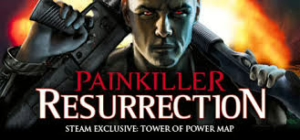
Developer: Anshar Studios Publisher: 3D Realms Release Date: Fall 2025
The new Painkiller was recently unveiled at the Future Games Show Spring Showcase. The trailer shows the return of iconic weapons from the original 2004 game, including the Stake Gun, Electro Driver, and the titular Painkiller weapon (described as a “spinning fan of death”).
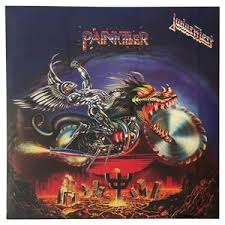
Key changes from the original include:
- Four playable characters instead of a single protagonist
- Each character has unique passive abilities and personalities
- Collectible Tarot cards that empower characters
- Currency system earned through raids and challenges
- Unlockable weapons, upgrades, and character skins
- Updated enemy designs with a “darker tone.”

The article’s author expresses significant scepticism about the new game, noting that while the original 2004 Painkiller was exceptional (“lightning in a bottle”), all subsequent entries in the franchise have disappointed. The author worries that the new features like currencies, character banter, and a conventional approach to hell-themed enemies might miss what made the original special—its bizarre environments, creative level design, and straightforward premise.
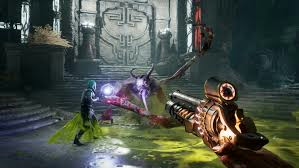
While the 45-second trailer “looks the part,” the author admits to having doubts but remains hopeful and plans to play the game when it releases. The game is currently available for wishlisting on Steam.
Painkiller (2004) Review
Painkiller stands as one of the most adrenaline-fueled first-person shooters of the early 2000s, embracing old-school FPS design while delivering it with then-modern graphics. The game follows Daniel Garner, who finds himself trapped in Purgatory after dying in a car accident with his wife. To escape and reunite with her, he becomes Heaven’s hitman, tasked with eliminating Hell’s generals who are preparing for war against Heaven.
Gameplay
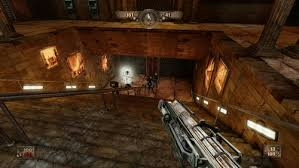
The core gameplay is straightforward and exhilarating: kill everything that moves. Painkiller focuses purely on combat with minimal puzzle elements, emphasizing speed, accuracy, and crowd control. The game features arena-style levels where players face waves of diverse enemies, from zombies and demons to ninjas and various otherworldly creatures.
Combat is enhanced by a unique checkpoint card system that offers special powers when certain conditions are met. The “Black Tarot” card system allows players to equip cards that provide various bonuses and abilities, adding a layer of customization to the gameplay.
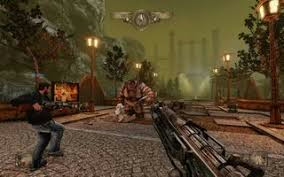
Weapons
The arsenal is among the game’s strongest features, offering genuinely creative weapons:
- The Painkiller: A spinning blade device that can also fire a powerful energy beam
- The Shotgun/Stake Gun combo: A standard shotgun that alternately fires wooden stakes that pin enemies to walls
- The Electrodriver: Fires electrified projectiles that chain lightning between enemies
- The Rocket Launcher/Chaingun: Combines explosive area damage with rapid-fire capability
- The Demon Morph ability Temporarily transforms the player into a powerful demon
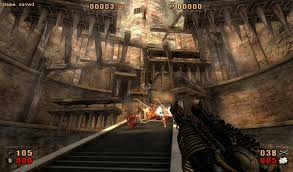
Level Design
The level design is varied and often bizarre, taking players through twisted versions of familiar locations—cemeteries, cathedrals, opera houses, an asylum, and even a medieval town. Each location features distinctive architecture and atmosphere, creating memorable battlegrounds.
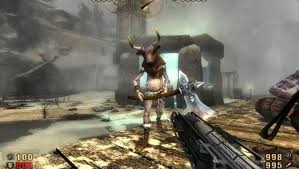
Graphics & Sound
For its time, Painkiller featured impressive graphics with detailed enemy models, dynamic lighting, and physics. The Havok physics engine allowed for impressive ragdoll effects and environmental destruction. The metal soundtrack by bands like Mech Age perfectly complemented the intense action.
Multiplayer
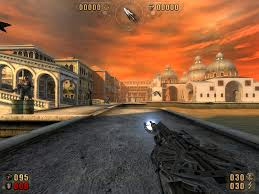
The multiplayer mode included standard deathmatch and team deathmatch options, as well as a unique “People Can Fly” mode where players could launch enemies into the air. The multiplayer had a small but dedicated following and even saw some competitive play.
Legacy
Painkiller is remembered for reviving the classic, fast-paced FPS formula when many games in the genre were moving toward more tactical or story-driven experiences. It spawned multiple expansions and sequels, though most fans agree that none matched the quality of the original game.
Verdict
Painkiller excels as a pure action shooter that prioritizes fun gameplay mechanics over a complex narrative. With its unique weapons, varied enemies, and frenetic pacing, it stands as a cult classic in the FPS genre. While it may not have the depth of story or mechanics found in some contemporaries, it delivers spectacularly on its promise of chaotic, high-octane combat.

For fans of classic shooters like Doom, Quake, and Serious Sam, Painkiller remains an essential experience that captures the raw, unfiltered joy of virtual carnage.
Maxthon
In the contemporary world of digital interaction, ensuring your safety while exploring the extensive realms of the internet has become increasingly paramount. The necessity of choosing a web browser that places a high value on security and privacy is more important now than ever. Among the various options available, the Maxthon Browser stands out as an exceptional choice that caters to these essential requirements—all at no cost to the user. This innovative browser is equipped with an impressive array of built-in functionalities, including an Adblocker and tools designed to thwart tracking, both of which play a significant role in bolstering your online privacy.

Maxthon is deeply dedicated to curating a browsing experience that not only prioritizes safety but also honours the privacy of its users. With a keen emphasis on safeguarding personal information and online activities from a myriad of threats, Maxthon employs a variety of practical strategies aimed at protecting user data. By leveraging advanced encryption techniques, the browser ensures that your sensitive information remains confidential and secure throughout your Internet browsing sessions.
When it comes to advocating for online privacy, Maxthon truly shines. The browser is thoughtfully designed with a host of features specifically tailored to enhance privacy, such as ad blockers, anti-tracking capabilities, and an incognito mode. These tools work in unison to block disruptive advertisements and prevent tracking scripts from surveilling your online actions. Consequently, users are afforded the opportunity to navigate the web within a more secure environment. The incognito mode further fortifies this sense of security by allowing individuals to browse without leaving behind any digital footprints or traces on their devices.
Maxthon’s steadfast dedication to user privacy and security is evident in its regular updates and continuous improvements. These enhancements are crucial for identifying and addressing potential vulnerabilities, ensuring that Maxthon remains one step ahead of emerging threats in the ever-evolving digital landscape. This commitment to providing a reliable private browsing experience makes Maxthon a commendable choice for anyone seeking enhanced online privacy.
In summary, the Maxthon Browser prioritizes user safety and embodies a profound respect for individual privacy, making it invaluable for navigating today’s complex online environment.
